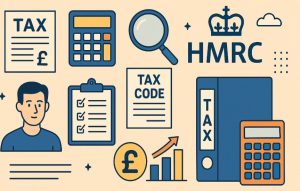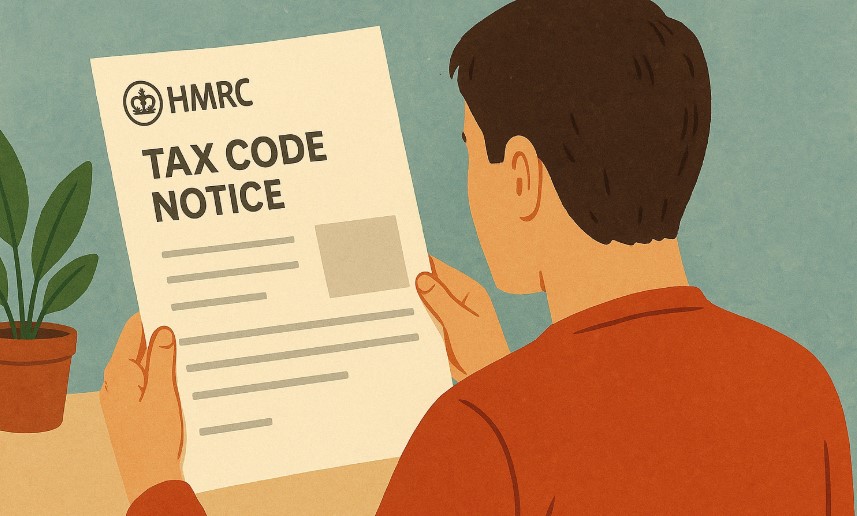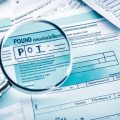Last Updated on: 16th April 2025, 11:34 am
Are you one of the many across the UK who recently received a sealed envelope marked HMRC? If so, you’re likely wondering what these HMRC tax code letters UK households are all about and why they’re suddenly trending in headlines and on social media.
As the 2025/26 tax year begins, HMRC is sending out thousands of these letters to update or correct income tax codes for millions of UK taxpayers.
Whether you’ve changed jobs, started receiving pension income, or claimed new benefits, your tax code may have shifted, and it’s vital to know what that means. But what should you look for?
Is your tax code correct? Could it lead to an unexpected bill? This guide answers the key questions UK households are now asking.
Why is HMRC Sending Tax Code Letters to UK Households Now?

Have you recently received a sealed letter from HMRC and found yourself puzzled? If so, you’re not the only one. Every year, around the beginning of the new financial year in April, HMRC sends out millions of tax code letters to households across the UK.
These HMRC tax code letters are designed to notify taxpayers of any changes made to their tax code, which could affect how much income tax is deducted from their wages or pensions.
For the 2025/26 tax year, this process has already started, with letters being distributed to individuals earning between £23,000 and £52,000. These letters typically reflect updates based on your recent financial activity, employment changes, or adjustments to personal allowances.
A large number of people are also receiving P800 notices, which are used when HMRC calculates that you may have underpaid or overpaid tax in the previous year. These follow the conclusion of the 2024/25 tax year and must be reviewed carefully to ensure your records are accurate.
If HMRC believes an underpayment has occurred, you’ll likely be asked to settle the outstanding balance. Ignoring the letter could lead to further deductions being made from your pay or pension in future months.
What Does Your HMRC Tax Code Letter Mean?

Receiving a tax code letter can seem confusing at first, especially when it’s filled with unfamiliar combinations of numbers and letters. But understanding your tax code is crucial to ensuring you’re paying the correct amount of tax.
Let’s break down what your code might mean:
- 1257L: This is the most common tax code in the UK and means you’re entitled to the standard personal allowance of £12,570, which is the amount you can earn before paying any income tax.
- BR: This stands for Basic Rate, meaning all of your income is taxed at 20%, usually applied when you have a second job or additional income.
- D0: Indicates that all income is taxed at the higher rate of 40%.
- D1: Applies when all income is taxed at the additional rate of 45%.
- NT: This rare code means No Tax is deducted and usually applies to individuals with special exemptions.
Each letter and number in the code has meaning. The numbers represent how much tax-free income you are entitled to. Multiply this number by 10 to get the figure. For instance, 1257 means you can earn £12,570 tax-free.
How Do You Check if Your HMRC Tax Code is Correct?
Checking your tax code isn’t just a one-time job — it should be reviewed annually, or whenever your financial circumstances change. Here’s how you can verify whether your current tax code is accurate:
- Log into HMRC’s Personal Tax Account: This online portal shows your current and past tax codes.
- Check your payslips or pension statements: Your tax code will usually appear at the top.
- Compare against your earnings and allowances: If you earn close to the personal allowance threshold and don’t claim other benefits, 1257L is likely appropriate.
- Speak to your employer or pension provider: They can confirm the code HMRC instructed them to use.
If you discover a mistake, it’s crucial to contact HMRC as soon as possible. You’ll want to avoid situations where incorrect codes lead to underpayment and surprise tax bills later in the year.
What Should You Do if You Receive a Sealed Tax Code Letter?

Receiving a sealed letter from HMRC can be concerning, but it’s not necessarily bad news. These letters are typically P2 notices, which tell you what your new tax code is and how it’s calculated.
Here’s what you should do next:
- Open and read the letter immediately time-sensitive details might be included.
- Compare the new tax code to your previous one. A change isn’t always negative, but it must make sense based on your situation.
- Follow any instructions given, especially if the letter includes a P800 notice, which usually means there’s a tax discrepancy to resolve.
If you’re informed of an underpayment, don’t ignore it. HMRC can adjust future tax codes to recover the owed amount gradually or issue a direct payment request.
In cases where the error wasn’t your fault, you may be able to apply for an A19 concession, a clause that allows HMRC to write off tax arrears. It’s not a guarantee, but it’s worth considering if HMRC failed to act on information you provided in good time.
Could Your Income or Benefits Trigger a Tax Code Change?
Yes, and many people are surprised by how easily their tax code can change. Here are the most common reasons:
- Starting a new job or switching employers
- Taking on a second job or freelance income
- Receiving state pension or occupational pension income
- Changes in company benefits, like a car or private health insurance
- Claiming Marriage Allowance or job-related expenses
- Ending or starting a tax-free savings account or relief scheme
Even slight changes in your income can trigger HMRC to adjust your code. For example, if you earn £500 more than expected, HMRC may issue a code reflecting a reduced personal allowance.
Can the Wrong Tax Code Impact How Much Tax You Pay?

Yes, an incorrect tax code can significantly affect how much tax you pay, and often not in your favour. If your tax code causes you to overpay, you’ll be out of pocket until you claim a refund, which may take time to process.
On the other hand, if you underpay, HMRC will eventually seek to recover the amount, often through adjusted future deductions, which can be disruptive to your finances.
This is especially relevant for people with multiple income sources, such as two jobs or a mix of employment and pensions. Each income stream must have an accurate code to prevent miscalculations.
In some cases, an incorrect code can result in taxation at a higher rate than necessary, increasing your deductions month after month. That’s why reviewing and correcting your tax code early is so important.
What if You’ve Never Received a Tax Code Letter From HMRC?
If you’ve never received a tax code letter from HMRC, it’s not necessarily a cause for concern. In many cases, it simply means your tax code hasn’t changed, or you may be self-employed and managing your tax through Self Assessment instead.
Some people access their tax code digitally via their Personal Tax Account, while others might not be currently employed or earning taxable income at all.
Still, it’s a good idea to check your tax code every April at the start of the new financial year. You can do this easily online or, if needed, request a P2 coding notice from HMRC to confirm your current tax code.
Staying informed helps ensure you’re paying the right amount of tax and avoiding unexpected bills later on.
What Are the Most Common HMRC Tax Codes?

Understanding your tax code is essential to ensure you’re not paying too much or too little tax. Each code has a specific meaning that can significantly impact your take-home pay, especially if you have multiple income sources.
| Code | Meaning |
|---|---|
| 1257L | Standard tax code full personal allowance of £12,570 |
| BR | All income is taxed at 20% no personal allowance given |
| D0 | All income is taxed at a 40% higher rate for the second income |
| D1 | All income is taxed at 45% an additional rate tax is applied |
| 0T | No personal allowance is often used in emergency situations |
| NT | No tax is deducted for individuals with exemptions |
Knowing what each code stands for helps you check whether your tax deductions are accurate and ensures you’re not caught off guard by unexpected changes.
Conclusion
With HMRC tax code letters, UK households rapidly becoming one of the most searched finance topics this April, it’s clear that people are looking for clarity, and rightly so. Your tax code directly impacts your monthly income, and even small errors can result in large underpayments or missed refunds.
If you’ve received a letter, take it seriously, open it, review it, and compare it with your income and employment status. Check your code through HMRC’s online portal and don’t hesitate to raise a query if anything seems off.
Being proactive could save you money, stress, and future financial complications. Remember, you’re responsible for ensuring your tax code is accurate, even if the mistake wasn’t your fault.
Stay informed, stay aware, and make sure you’re paying only what you owe, not a penny more.
FAQs
What is a P2 coding notice from HMRC?
A P2 coding notice explains your new tax code and why it changed, including any income or benefit updates that triggered the adjustment.
Why did HMRC send me a letter about a tax code change?
HMRC sends these letters when your income, job status, or benefits change — all of which can affect how much tax you should pay.
What is the difference between a P800 and a normal tax code letter?
A P800 shows that you underpaid or overpaid tax previously, while a standard tax code letter explains current or future tax deductions.
Can I ignore my HMRC tax code letter if my pay looks correct?
No, even if your pay seems right, a wrong tax code might be silently overcharging or undercharging you, leading to issues later.
What happens if I don’t respond to HMRC’s letter?
HMRC may change your tax deductions automatically, and if you owe money, you could end up repaying it in future pay periods.
How do I fix an incorrect tax code with HMRC?
You can log into your Personal Tax Account, call HMRC directly, or ask your employer to request a review of your tax code.
Can pensioners receive HMRC tax code letters too?
Yes, pensioners often get tax code updates, especially if they have more than one income source, like private pensions and the State Pension.




















No Comments
Leave a comment Cancel